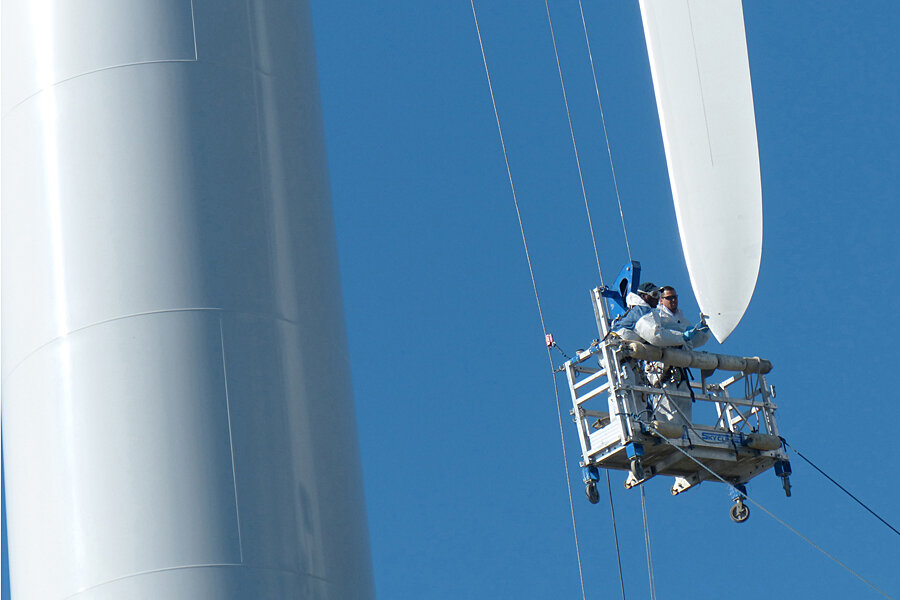Chinese manufacturer renews two-bladed wind turbine design
Look at a picture of a wind turbine and you’ll see tower topped by a fan with three blades. A Chinese company is leading an effort to build two-bladed turbines. There’s nothing new about that. What’s new is that they finally seem to work properly.
First the good news: As with all research into new, alternative energies, this focuses on economics. Some say two-bladed turbines could cost 20 percent less to build and install than its conventional three-bladed siblings, while still equaling their power output.
The bad news? The flexible blades mounted on the windward side of a turbine tower can bow backwards and strike the tower, ruining the blades. It was this snag, discovered 12 years ago, that put two-bladed turbines on the shelf – until now.
China’s Ming Yang Wind Power, the world’s ninth-largest wind-turbine manufacturer, plans the largest test ever of a two-bladed turbine design. It is building a six-megawatt, two-bladed turbine in China this year that is expected to generate as much power as the largest commercial offshore turbines. The company also plans to build another such farm off the Norwegian coast next year.
The reason for Ming Yang’s confidence in these projects is that turbine designers have discovered how to keep the blades intact. Peter Jamieson of Scotland’s Garrad Hassan & Partners mounted the turbines on the downwind side of the towers and applied a technique called roto-braking to lower their risk of striking the towers regardless of wind speed.
Offshore wind farms enjoy steadier breezes than those based on land, but they’re about twice as expensive to install and maintain. This, though, can be mitigated in part by the use of two-bladed turbines, which use fewer materials and so are lighter than three-bladed turbines. (Related Article: US Announces Major Offshore Wind Auction)
Further, conventional three-bladed turbines must be mounted on the upwind side of their towers and must be rigid enough to resist striking them. Lighter two-blade turbines can be mounted downwind and can even have hinged blades that are more flexible under heavy wind gusts.
The lightness and flexibility of two-bladed turbines lead to savings in materials for the entire turbine structure. For example, the current market leader in three-bladed, six-megawatt wind turbines by the German engineering company Siemens weighs almost 350 tons. Ming Yang’s two-bladed turbine weighs just 308 tons.
Despite this good news, Larry Miles, the CEO of the Wind Turbine Co., which built the two-bladed turbine that failed in 2002, wonders whether the Western energy industry is willing to face the risks of developing a new wind-turbine design.
Nevertheless, Miles believes that a well-financed Chinese company can afford to take these risks. “If anybody does it, it will be Ming Yang,” he said. “They have enough substance to do it, and they have the Chinese market.”






